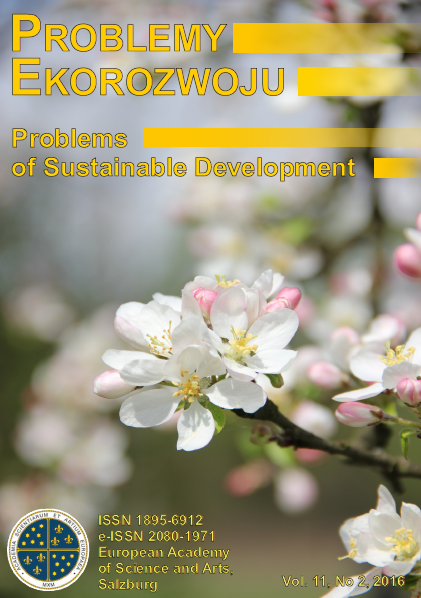Wpływ czynnika środowiskowego na dynamikę rozwoju prawa sąsiedzkiego w kontekście problematyki rozwoju zrównoważonego
Aleksey Anisimov*, Irina Emelkina**, Anatoliy Ryzhenkov***
* Chair of Civil Law, Volgograd Institute of Business, Volgograd, Russia
** Chair of Civil Law and Procedure, Mordovia State National Research University, Saransk, Russia
*** Chair of Civil Law, Volgograd Institute of Business, Volgograd, Russia
E-mails: anisimovap@mail.ru, iemelkina@ya.ru, 4077778@list.ru
Abstract
The article deals with evolution of neighbor law beginning from the age of the ancient world and up to our times. The authors prove that already by the middle of the 19th century environmental and technological threats become greatly important in the neighborhood relations, and from the early 21st century these threats start acquiring a new systematic attribute associated with the beginning of the age of globalization. Sustainable development at the local level is greatly influenced by the dynamics of population settlement leading to emergence of giant megalopolises, where millions of people reside at the same time. This causes new types of neighborhood disputes not existing before. The post-Soviet legal science, courts and legislation are not completely ready for their resolution. Nevertheless, even now we can observe the outlines of new environmental threats to sustainable development at all its levels, caused by development of green energy, nanotechnology and the climate change. There are no simple ways to resolve neighborhood conflicts either – it is necessary to create an integrated system of containment and counterbalance, including both private and public methods.
Key words: neighbors, disputes, environment, technologies, private law, development
Streszczenie
Artykuł przedstawia rozwój prawa sąsiedzkiego począwszy od starożytności po czasy obecne. Autorzy udowadniają, że już w połowie XIX w. zagrożenia środowiskowe i technologiczne odgrywały istotną rolę w relacjach sąsiedzkich, a od początku XXI w. wzbogaciły się o nowy atrybut systemowy związany początkami ery globalizacji. Rozwój zrównoważony na poziomie lokalnym pozostaje pod znaczącym wpływem dynamiki osadniczej, związanej z powstawaniem gigantycznych mega-metropolii, zamieszkiwanych w tym samym czasie przez miliony ludzi. Warunkuje to powstawanie nowych typy konfliktów sąsiedzkich, dotąd nieznanych. Postsowieckie nauki prawne, sądy i prawodawstwo, nie są do takiej sytuacji przygotowane. Ponadto już teraz możemy dostrzec zarysy nowych środowiskowych zagrożeń dla zrównoważonego rozwoju i to na wszystkich jego poziomach, a związane z rozwojem zielonej energii, nanotechnologii i postępujących zmian klimatycznych. Nie ma także prostych sposobów rozwiązywania konfliktów sąsiedzkich – należy stworzyć zintegrowany system kontroli i przeciwdziałania, który uwzględniałby zarówno środki publiczne, jak i prywatne.
Słowa kluczowe: sąsiedzi, konflikty, środowisko, technologie, prywatne prawo, rozwój
Problemy Ekorozwoju 11(2)2016: 13-22
